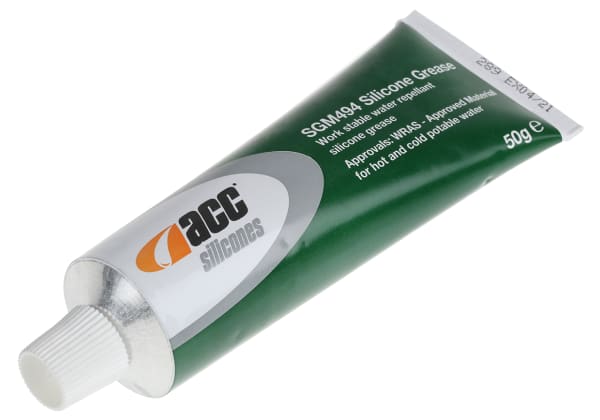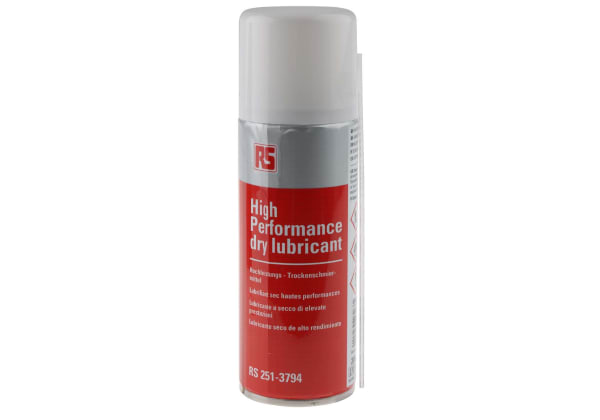- Published 11 Oct 2023
- Last Modified 17 Oct 2023
- 6 min
Why are Industrial Lubricants Important?
Machinery lubrication is the lifeblood of industrial maintenance and used in an array of sectors to keep equipment running smoothly. But there’s a lot more to machinery lubrication than meets the eye. Read our guide to learn about the different types of industrial lubricants out there, how they work, and how to develop an effective lubrication schedule at your plant. If you’ve ever wondered ‘what is grease?’, we’ve got you covered.
Reviewed by David Carmichael, Solution Engineer (October 2023)
What are industrial lubricants, and why are they important? Industrial lubricants help to maintain machinery. Greases, oils and lubricants are oily or greasy substances that are applied to moving parts such as bearings and gears. They are important for manufacturers because they reduce wear and friction. Types of industrial lubricant oil include bearing oil and motor oil.
Lubricants are used in a huge range of applications from automotive to aerospace, to the medical sector and the energy industry. They form a slick layer between metal parts, reducing friction and enabling movement. One of the benefits of lubrication for machines is that it reduces downtime and helps keep equipment in good condition. This in turn improves productivity and profitability and makes a plant safer. Keeping machinery lubricated can also help reduce industrial maintenance costs.
Lubrication and Machinery Lifespan
Lubrication increases the life of equipment. It reduces wear and tear on components, lowers friction and heat between them, and minimises corrosion. This keeps a machine in optimal condition, extending its life.
Ultimately, that means lower capital expenditure for the manufacturer because the machine will run for longer before it needs to be replaced. Effectively, the investment case for buying the machinery in the first place is improved.
So, devising an effective lubrication regime is an investment in machinery longevity. Here are some factors to consider when developing an industrial lubrication programme.
Viscosity
Machinery performance is influenced by the viscosity of the machinery lubricants the engineer uses. Viscosity is the resistance of a fluid to flow. Broadly, fluids with different viscosities flow at different speeds under the same force at a given temperature.
Viscosity is measured in centipoise (cP). For example, water has a viscosity of around 1 cP, while honey has a viscosity between 2,000 and 3,000 cP. Water flows much more easily than honey. Learn more about the viscosities of common machine oils here.
When machinery temperature increases, lubrication oil viscosity drops. The quality and characteristics of the lubricant determine how much the viscosity will go down with increasing temperature.
A lubricant may have the correct viscosity for the application at a particular temperature. But this viscosity may decrease when temperature goes up, leading to mechanical friction and worn components.
At lower temperatures, another lubricant might have viscosity that is too high, reducing the amount of oil available in the machinery. It’s therefore important to choose the right oil with the correct viscosity. Doing so helps a machine live longer.
Viscosity Index
The viscosity index (VI) of a lubricant can help the engineer determine whether a lubricant is right for the job. Lubricant viscosity is shaped by temperature. Higher temperatures mean lower viscosity. A fluid with a low viscosity index will experience more degradation of viscosity in response to higher temperatures.
High VI oils are not affected in the same way. They remain stable, not varying across the temperature range at which a machine operates. For the maintenance engineer, that means better performance.
Understanding VI
The VI enables technicians to know if a lubricant is suitable for a piece of machinery’s operating temperature range. An engineer needs to understand VI to know whether a lubricant will do the job at hand, based on the operating temperature range of the asset.
VI is measured as a number. For example, the viscosity index of a typical mineral oil is between 95 and 100, but synthetic oils may have a VI as high as 250. A higher number means the lubricant changes viscosity at a lower rate as heat increases between components. This helps prevent wear and tear on machinery.
Thermal Stability
Thermal stability is an important characteristic of lubricants for machines. Thermal stability is defined as the lubricant’s ability to resist decomposition as temperature changes. It is important if lubricants are to be effective. For example, a lubricant that decomposes at high temperatures can increase mechanical wear and tear. There may also be problems at low temperatures if lubricants congeal, starving machinery of oil and increasing wear and tear on components.
Lubrication Schedules
A lubrication schedule is a plan for the lubrication of each piece of equipment in a plant. The plan should include lubrication frequency and the type of lubricant to be used. Ideally, lubrication of machines should be dynamic, rather than just regular, with engineers carrying out lubrication in response to changing requirements. A well-designed industrial maintenance lubrication schedule will help to ensure effective lubrication and reduce machinery breakdown and failure.
The 4Rs
Right lubricant, right place, right amount, right time. That’s the 4Rs approach to lubrication. To get this right, it’s important to understand each machine’s lubrication requirements and how to deliver lubricant to it in a timely, efficient manner. It’s necessary to know the equipment’s lubrication points and the amount of lubricant that should be used.
To start, engineers should gather as much information as they can about all the machines they are maintaining. This should include:
- Machine data, such as location
- Information about lubrication from machinery instruction manuals and schematics
- Oil analysis plans and details of stocks of available lubricants
- Details of all machine bearing points (parts that enable object rotation), including type, size, and running speed, and any lubricants that are used to maintain bearings
- List of reservoirs for gearbox lubricant
- Details on whether lubricant is administered manually, semi-manually, or automatically
It’s also important to audit all lubricants at the facility and where and when they are used. The engineer should engage with the lubricant manufacturer to analyse lubricant delivery and optimise machine efficiency and lifecycle.
The result should be a detailed inventory of the correct lubricant for each job (right lubricant); knowledge of the correct lubrication points on a given piece of equipment (right place); understanding of how much lubricant to apply (right amount); and that lubrication is carried out on schedule in each case (right time).
Why Machines Fail
Machines fail for a variety of reasons. If a preventative or predictive maintenance regime is not used, it makes it more likely that machinery will wear out earlier than expected. Machinery may also be used incorrectly by operators, damaging it.
Mechanical wear and tear means material is lost from components within the machine when they touch each other. Corrosion of machine parts might also occur if an environment is contaminated with water or acid. Oils used for lubrication may become dirty or contaminated with particles, increasing the possibility of mechanical wear.
Proper lubrication of machine components and proactive maintenance help reduce the possibility of machinery failure.
Lubrication Best Practice
In addition to the 4Rs, an outstanding lubrication regime should:
- Store and label lubricants correctly in a dedicated space within the plant
- Monitor lubricant viscosity
- Use oil analysis to assess machine oil for particulates
- Use only clean, non-contaminated lubricants
- Keep grease, oil and lubricant dispensers clean and safe
- Consider automatically dispensing lubricant to remove variability
Get these factors right as part of a proactive maintenance programme and plant machinery will be less prone to failure. Not only that, productivity, profitability and, above all, safety will be improved.



